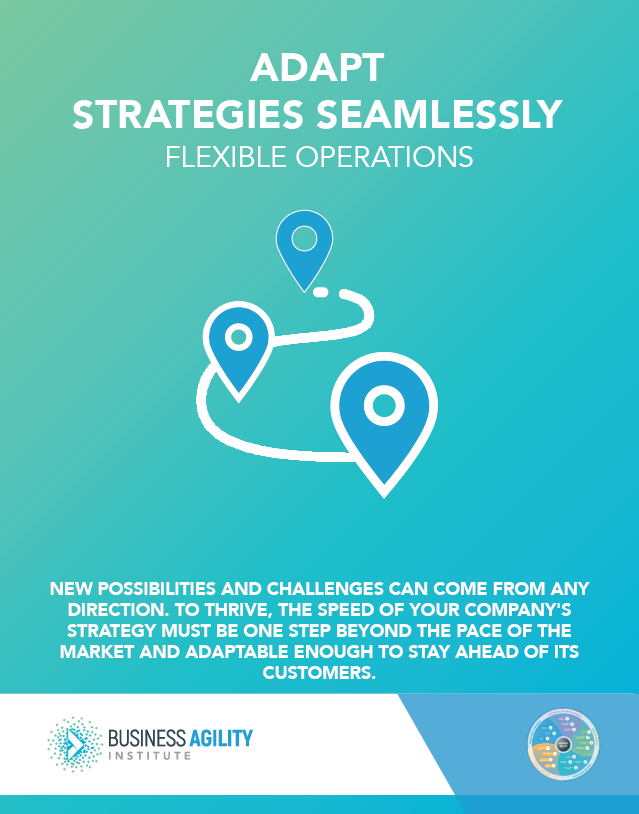Domains of Business Agility
- Responsive Customer-Centricity
- / Fiercely Champion The Customer
- / Sense & Respond Proactively
- / Integrate Diverse Ideas
- Engaged Culture
- / Cultivate A “Learning Organization”
- / Engage Transparently & Courageously
- / Embed Psychological Safety
- / Act As One
- Value-Based Delivery
- / Unleash Workflow Creatively
- / Prioritize. Prioritize. Prioritize.
- / Deliver Value Sooner
- / Seize Emergent Opportunities
- Flexible Operations
- / Adapt Strategies Seamlessly
- / Fund Work Dynamically
- / (Re)Organize Structures Fluidly
- / Balance Governance And Risk
- People-First Leadership
- / Foster Authentic Relationships
- / Empower With Accountability
- / Realize People’s Potential
Nowadays, strategic planning must be an ongoing and evolving process that is fast to change in response to dynamic conditions. While we need to look forward, gone are the days of the 3-year — or even 1-year — plan written in stone. To thrive, the speed of your company's strategy must be one step beyond the pace of the market and adaptable enough to stay ahead of its customers. Significantly, this means that the strategic planning process can’t take too long or be too expensive. The goal is to establish adaptable strategies that can carry you forward — even when circumstances and priorities change.
New possibilities and challenges can come from any direction. Having strategies that enable your organization to pivot dynamically is therefore a key component of business agility. When your organization is prepared to adapt its strategies quickly and effectively, it will be better able to embrace change, tap into emergent opportunities, and meet the needs of the future.
Primary Behaviors
The following 4 behaviors strongly contribute to the ability to adapt strategies seamlessly.
B52: Executives create vivid and inspiring visions of the future and invest time inspiring everyone towards them: We develop compelling and vivid stories of how our products and services will benefit our current and future customers that inspires everyone to create that significant future.
B53: Everyone plans using outcomes, rather than outputs: Plans are created to achieve measurable and intended business or customer results that deliver business value (outcomes) rather than just the activities needed towards the goal (outputs). Specific activities are not planned in detail to allow greater flexibility in achieving the outcome.
B54: Leaders conduct regular & frequent strategic reviews and updates: Leaders regularly review progress against the organization’s strategic plans; and update the strategic plans to reflect new feedback and learning.
B55: Leaders conduct strategic planning across multiple time horizons: Leaders include more than one time period (for example 1 to 3 years, 3 to 5 years, 10-20 years) when developing strategic plans.


